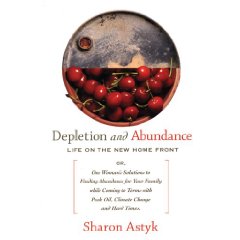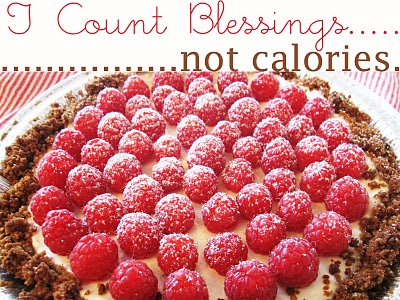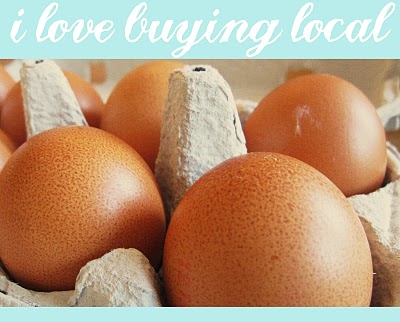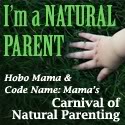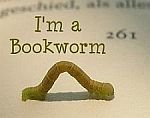I love to read. I always have loved to read, when I get to choose the book. I remember reading Caddie Woodlawn, American Girls books (I liked Kirsten best), Charlotte’s Web, Farmer Boy, and other classic books while growing up. Now, as an adult, I still enjoy reading. I love to read books about sharks, including The Devil’s Teeth, the Earth’s Children series, especially The Valley of Horses, and in the last few years my collection of earth friendly books has grown.


Last year, I got the idea to assign a book review to my AP Environmental Science students, because I thought that they would really enjoy being able to read an environmental book of their choice. OK, I admit it, I enjoy hearing about a bunch of books without reading them. It helps me broaden my literary horizons and it also helps me make mental notes of which books I would like to read. For example, I read Omnivore’s Dilemma after a student presented about it last year.
We just finished this year’s round of book reviews, and I’ve compiled a list of the books my students read. I’ve already borrowed a couple of them, and I’m thinking about which other ones I want to read over the summer. I asked students to write a sentence or two to sum up the book, although because many of them are overachievers, some descriptions are a little longer. I’ve organized the books into categories here, and I hope that one or more of these books will strike you as a good read.
Sustainable Living
The Ten Trusts by Jane Goodall and Mark Bekoff
- This book gave 10 different guidelines that we should follow to respect our planet, animals, and people more. Some of the trusts included “going green,” teaching kids to love animals, and accepting animals as companions, not slaves.
Go Green Live Rich by David Bach
- This book described 50 ways we can help save the environment along with saving money. It showed that not everything people have to do to help the environment is a big expense like buying a hybrid car or putting solar panels on your house. It shows that there are simple things that cost nothing that someone can do to save money.
Sustainable Planet: Solutions for the 21st Century (collection of essays)
Solar Water Heating by Bob Ramlow and Benjamin Nusz
- This book is about the home conversion from petroleum to solar water heating and if it is the right things to do in your home. It tells you how to build a system while also trying to save as much money as possible over time.
Climate
Six Degrees: Our Future on a Hotter Planet by Mark Lynas
- The book has 6 chapters, one for each degree, which each explain what will happen when the earth warms to each point.
The Live Earth: Global Warming Survival Handbook by David de Rothschild
- This book was a list of 77 things the average person can do to help stop global warming. In the back, there was a list of things to do if the 77 steps fail (like move to another planet).
Inconvenient Truth by Al Gore
- This book talks about how global warming is happening and how it is different than the natural trend of global increase or decrease of temperature. It also talks about how current emissions of CO2 pollution are affecting the temperatue of the earth.
The Weathermakers by Tim Flannery
- This book is about how global warming affects the climate and what would happen if the world’s climate was changed.
Is the Temperature Rising? by S. George Philander
- This book was about the scientific causes of possible global warming. The author, a geoscientist at Princeton puts complex science ideas into generally comprehendable language suitable for the curious reader.
The Hot Topic by Gabrielle Walker and Sir David King
Environmental Contamination
Fallout by Juan Gonzalez
- This book was about how the EPA lied to the public about the hazmats and toxic substances found after the 9-11 attacks. Also it focuses on what all the chemicals found can do and how we didn’t protect our rescue workers from them or learn from past mistakes.
The Killing of Karen Silkwood by Richard Rashke
- Karen Silkwood worked at a plutonium plant and found many safety and health issues wrong with it. She was poisoned with plutonium and then killed in a car crash. No one knows who caused this tragedy, but some believe it was Kerr-McGee, the company she worked for.
World Environmental Issues
Dancing at the Dead Sea by Alanna Mitchell
- This book is about Alanna Mitchell’s journey around the world to environmental hotspots. It talks about environmental degradation and the possibility that humans may become extinct like dinosaurs.
The Population Bomb by Paul R. Ehrlich
- This book is mainly about the cause of overpopulation and how it is affecting our world. Ehrlich predicted that millions of people will die from the 1970’s to 1980’s.
Outdoors
Last Child in the Woods: Saving our Children from Nature-Deficit Disorder by Richard Louv
- This book was about how children may be suffering from Nature-Deficit Disorder. It told us why we all need nature in our lives to be healthy, well-rounded people.
A Walk in the Woods by Bill Bryson
- Bryson and his friend Katz attempt to hike the Appalachian trail from Springer Mt. in Georgia to Mt. Katahdia in Maine.
Into the Wild by John Krakauer
- This book describes the journey of Christopher McCandless, also known as “Alex Supertramp.” We learn how hard it is to survive with very little and survive in nature, and we also learn how he met his demise in Alaska.
Wildlife
Never Cry Wolf by Farley Mowat
- This book was a story about Farley Mowat’s experience living in the Barren Lands to observe wolves. Originally sent to see if wolves were the cause of the decrease in caribou, Mowat finds the wolves are of no threat to the caribou. They essentially help the caribou population by only feeding on dead carcuses. Mowat finds the actual threat is humans to the wolf population and becomes very attached to a specific wolf family. Later on he goes home to raise awareness of the dangers wolves face.
When Elephants Weep: The Emotions of Animals by Jeffrey Moussaieff Masson
- This book was about the different emotions that animals are capable of obtaining and projecting to other animals, even to humans.
Polar Bears by Ian Sterling
Among Grizzlies by Timothy Treadwell and Jewel Palovak
- Treadwell lived in Alaska every summer for thirteen summers with no protection or communication. His goal was to study grizzly bears and allow them to gain the same respect for him as they have with their fellow bears.
Elephant Destiny by Martin Meredith
- This book gives a full description of elephants and their place in history, along with the problems they currently face.
Fiction and Novels
The Day After Tomorrow by Whitley Strieber
- This book is about a climatologist named Jack Hall who discovers a climate change that affects the world as we know it. The whole planet freezes over leaving his son, Sam, stuck in Manhattan.
The Handmaid’s Tale by Margaret Atwood
- The aftermath of nuclear war leads to government and military dictatorship of reproduction due to widespread infertility. In the struggle to create a Utopia, the government finds that the fear of declining birth rates have pushed the people of the society to take their own measures to survive.
Adrift by Steven Callahan
- This book was about a man who loves to sail but during a race across the Atlantic his boat sinks. He has to endure sharks and watch ships pass him while he tries to survive in a tiny raft.
The World Without Us by Alan Weisman
- This book detailed the earth’s existance after humans left the earth, whether from extinction by plague or from moving to a different planet. The book follows various manmade things, and how long they last and why they fall, as well as how species adapt without us here.
Field Notes from a Catastrophe by Elizabeth Kolbert
- This fiction book is about the increasing problems of natural distraction due to global warming. This book mainly focuses on the long-term effects of greenhouse gases on the arctic.
Children’s Books
The Lorax by Dr. Seuss
- The Lorax is a story about the once-ler who cuts down “truffala trees” and makes “theeds.” The lorax warns him that his cutting and polluting is bad for the environment but the once-ler continues until all the trees are gone and the forest is destroyed.
Earth Day-Hooray by Stuart Murphy
Why are the Ice Caps Melting? by Anne Rockwell
Where does the Garbage Go? by Paul Showers
The Kids’ Guide to Global Warming by Glenn Murphy
I hope you found a book to read! Happy reading!

